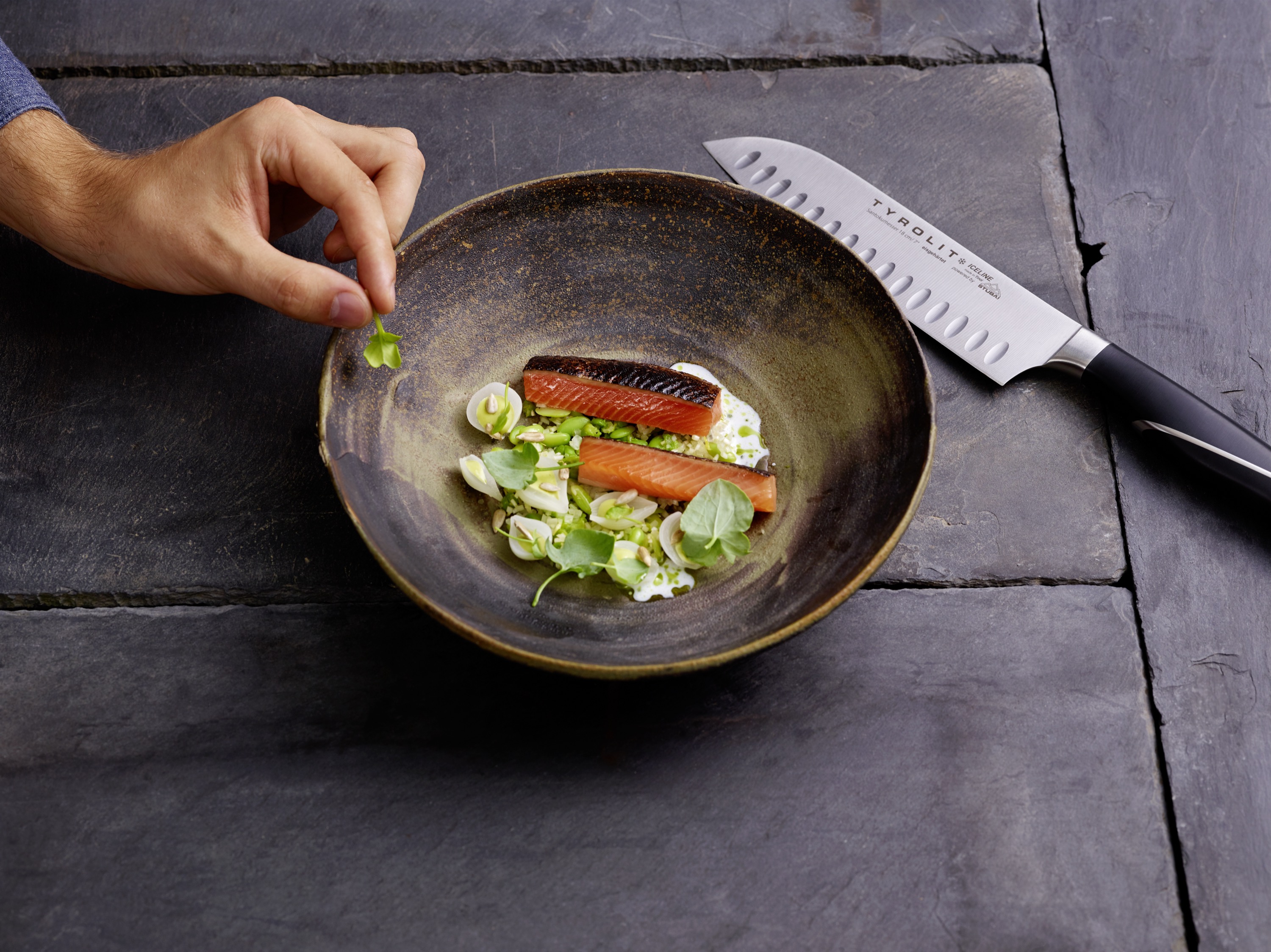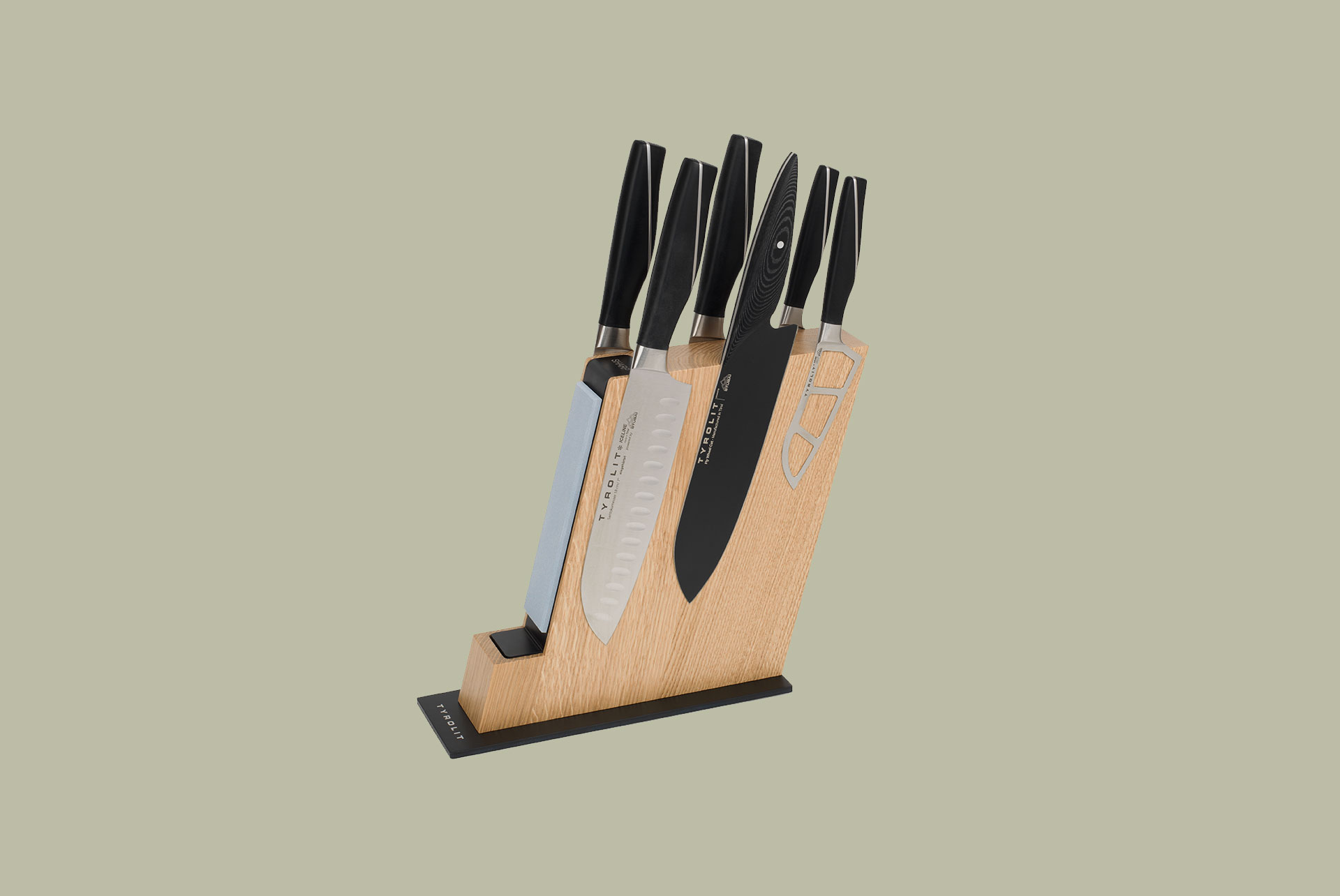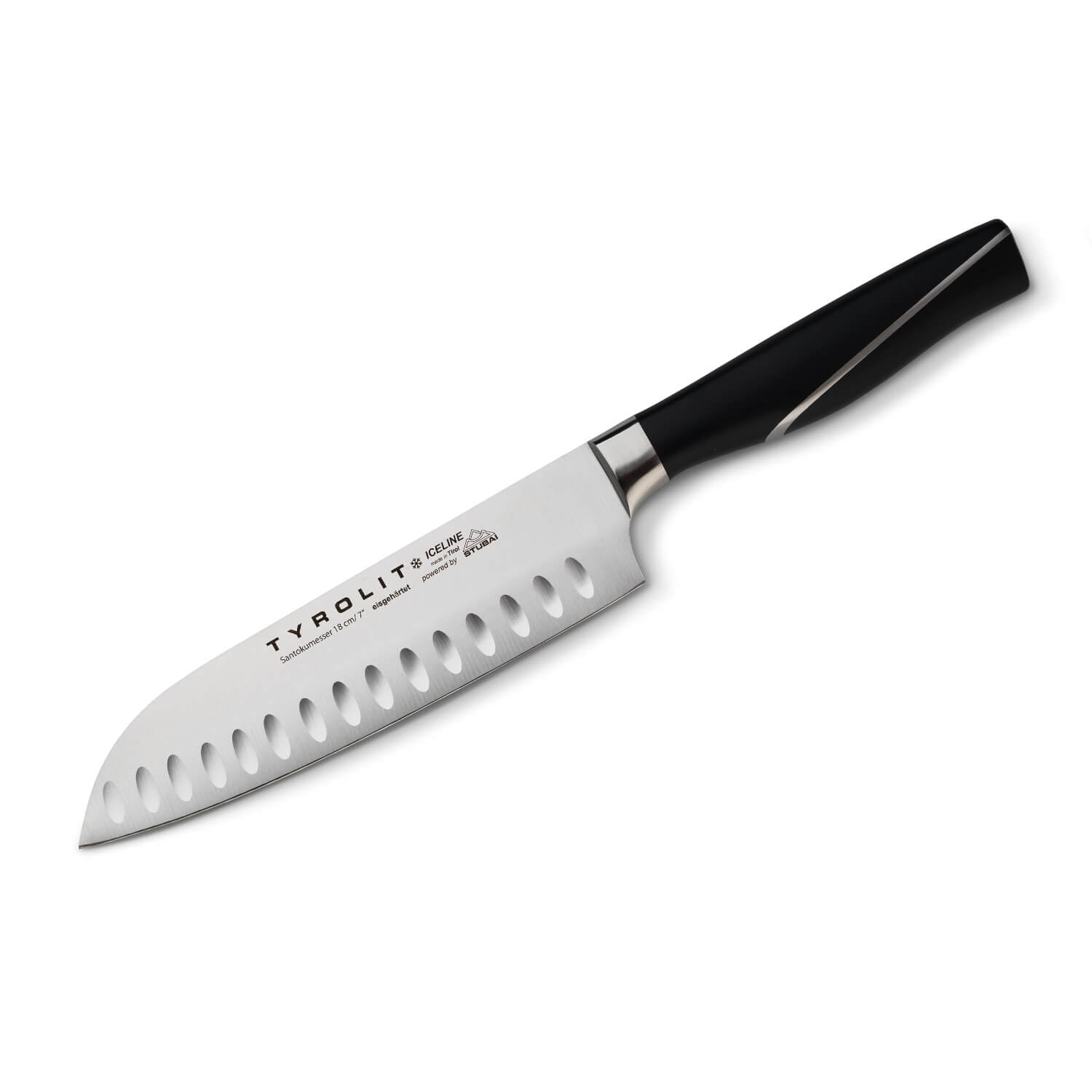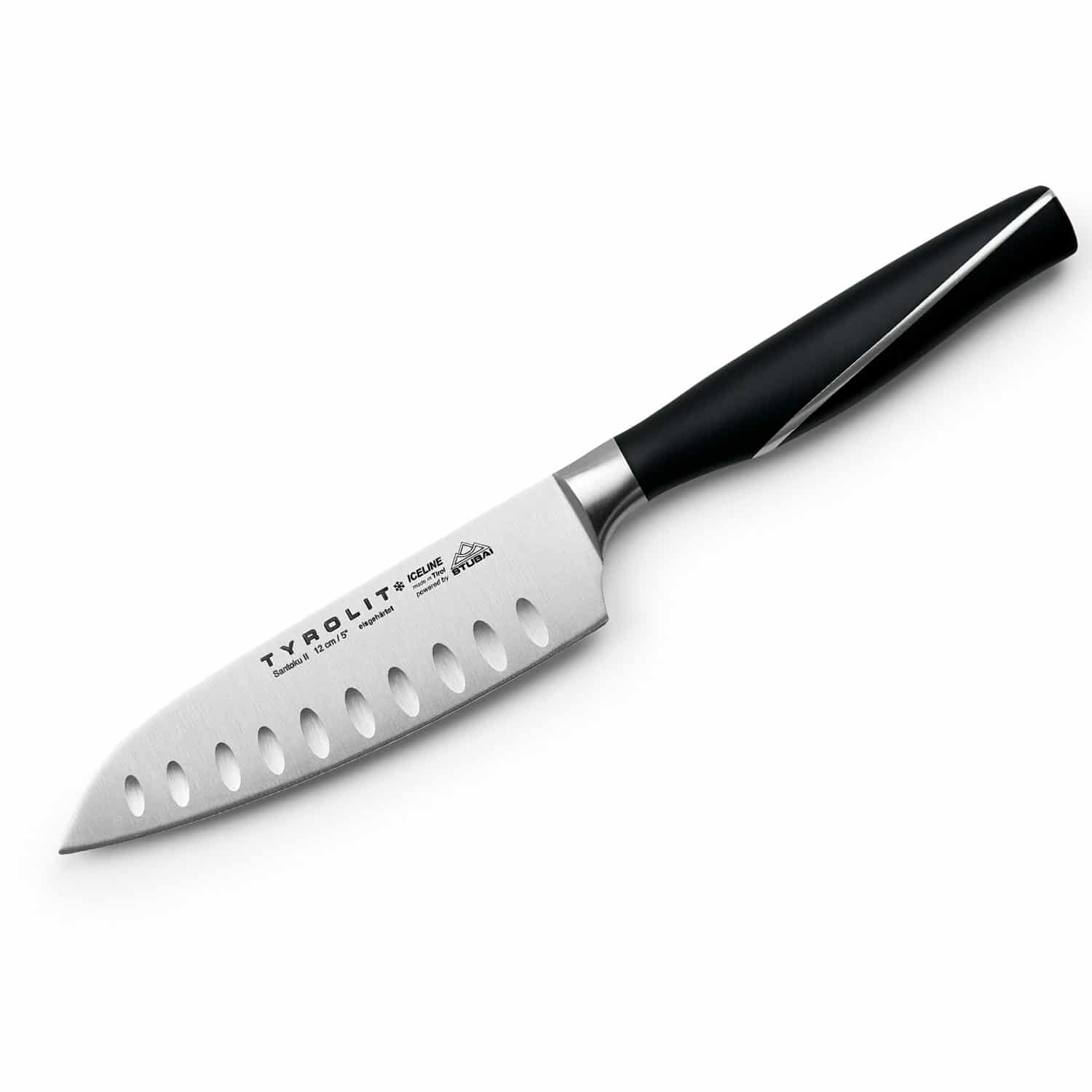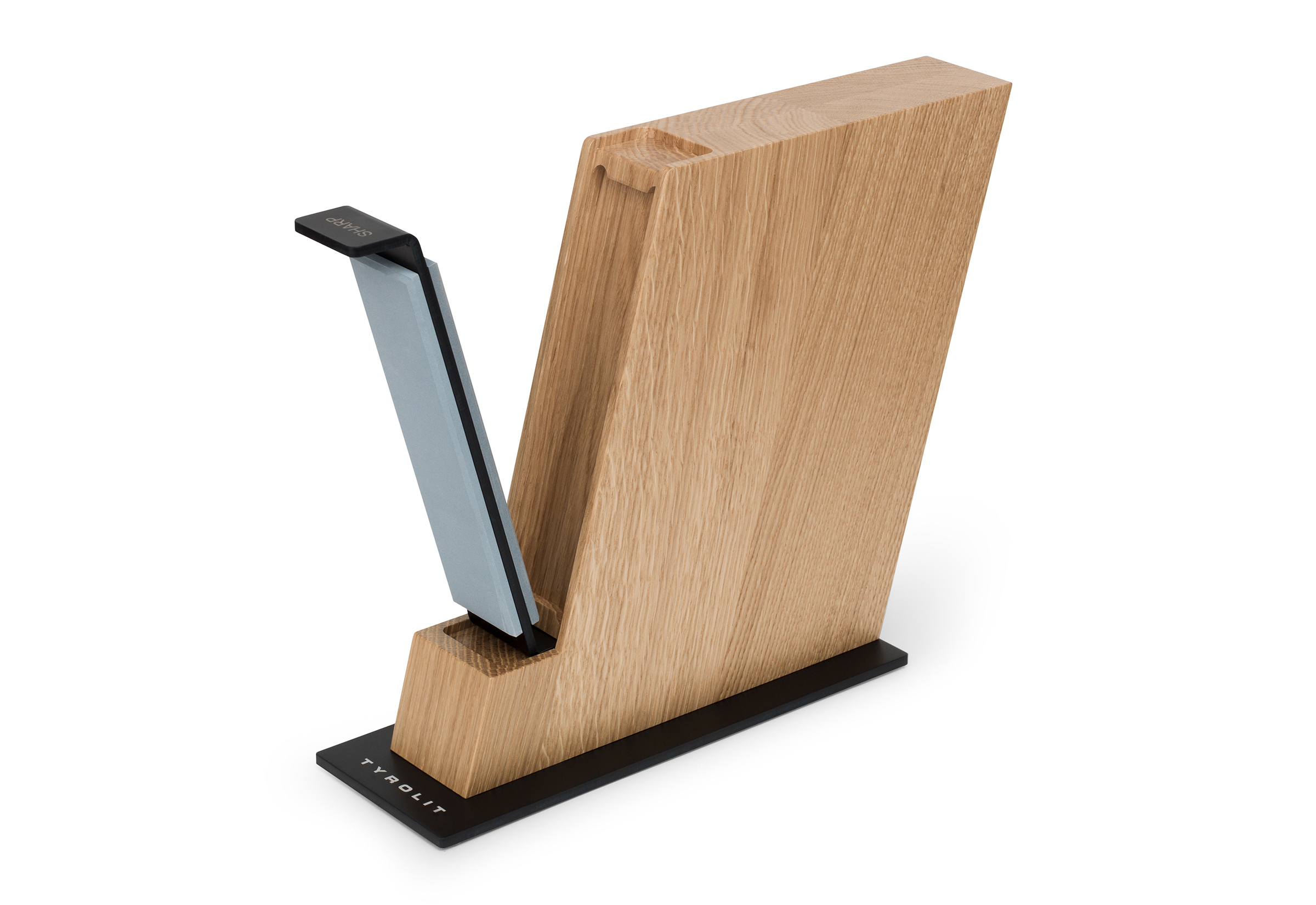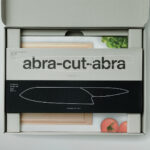How to Properly Hold a Santoku Knife?
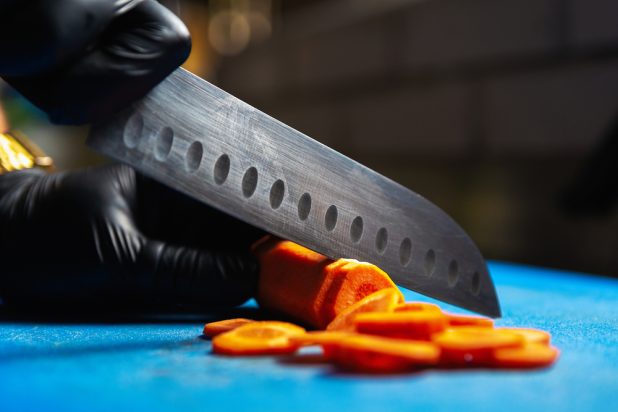
To correctly hold a Santoku knife, the pinch grip is commonly used. Here, the index finger and thumb are placed on either side of the blade close to the spine. The rest of the hand grasps the handle of the Santoku knife, allowing for both precision and power in cutting.
In this article, we will explain how to properly hold a santoku knife, but also discuss cutting techniques, care and storage of these kitchen knives.
How to Hold a Santoku Knife
The correct way to hold a Santoku knife, as previously mentioned, involves what is known as the pinch grip for many amateur and professional chefs. In this grip, the thumb and forefinger hold the blade directly in front of the handle, while the rest of the fingers wrap around the handle.
This technique offers maximum control and precision since the hand is closer to the cutting surface. By using this grip, you can ensure that the santoku knife does not slip, allowing for even cuts. This is particularly helpful for fine slicing tasks, enhancing efficiency in the kitchen. However, be cautious not to grasp too far down the blade and come near the cutting edge.
Also, do not be discouraged if this grip technique does not suit you and you find it easier, for example, to hold the handle with your whole hand. Ultimately, the most important thing is that you are able to use your knife safely, efficiently, and accurately.
Cutting correctly with the Santoku knife – the rocking cut
To cut properly with a Santoku knife, the rocking cut is especially recommended. The blade is moved forward and backward in a rocking motion. This technique is particularly well-suited for cutting vegetables and herbs, as it is both quick and precise.
To properly execute the rocking cut, place the tip of the knife on the cutting board and move the blade evenly back and forth as well as up and down—always keeping the blade in contact with the cutting board.
The wide blade and the slightly curved edge of the Santoku knife optimally support this technique and ensure even, fine cuts – no matter what you do with the Santoku knife.
What is a santoku knife? The Japanese all-rounder of chef’s knives
The Santoku knife is a true kitchen knife all-rounder and an ideal addition to the classic European chef’s knife. Read more!
Underlay and care of the santoku knife – as part of the overall Tyrolit Life package
To ensure prolonged enjoyment of your Santoku knife, it is essential to handle it with care. This includes choosing the appropriate cutting surface. Cutting boards made of wood or plastic are preferable, as they are gentle on the blade due to their slight give. Tyrolit Life provides premium-quality cutting boards that include an integrated sharpening stone. These cutting boards, crafted from robust, oiled beechwood, are both hygienic and long-lasting.
In addition to Tyrolit Life’s own knife sharpeners, the cutting boards of the Tyrolean company also offer the opportunity to sharpen your knives. This is ensured by the removable ceramic grindstone (with grits 400 and 800 for coarse and fine grinding), so that the efficiency in your kitchen is further increased.
When storing the santoku knife, it is also important to protect the blade as much as possible. Tyrolit Life therefore offers elegant knife blocks, which are also equipped with an integrated sharpening stone. As with the cutting board, a preset sharpening angle of 15 degrees ensures maximum comfort when sharpening most European knife types.
Together with the Tyrolit Life Santoku knives in blade lengths of 18 or 12 cm, cutting boards, knife blocks, and knife sharpeners complement a comprehensive package that allows you to perform at your best in the kitchen.
Storing Santoku Knives – Correct and Safe Storage
Proper storage not only protects the blade from damage and wear, but also contributes to the safety in the kitchen. In this article, we will therefore present various methods of Santoku knife storage and explain how you can optimally protect and care for your knife.
FAQs
What do I do with a Santoku knife?
How to properly hold the knife when cutting?
When do you use a Santoku knife?
What is special about a santoku knife?

